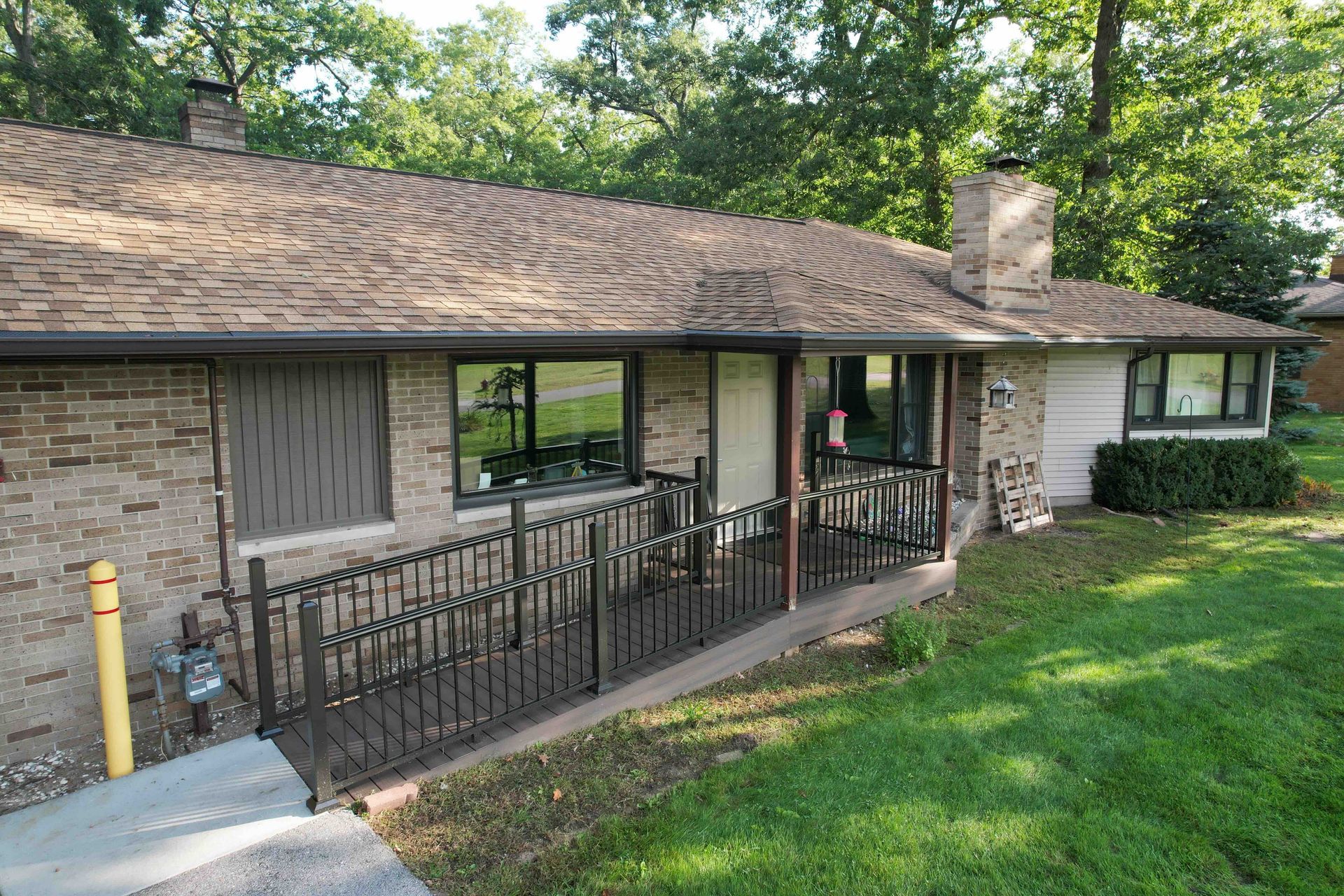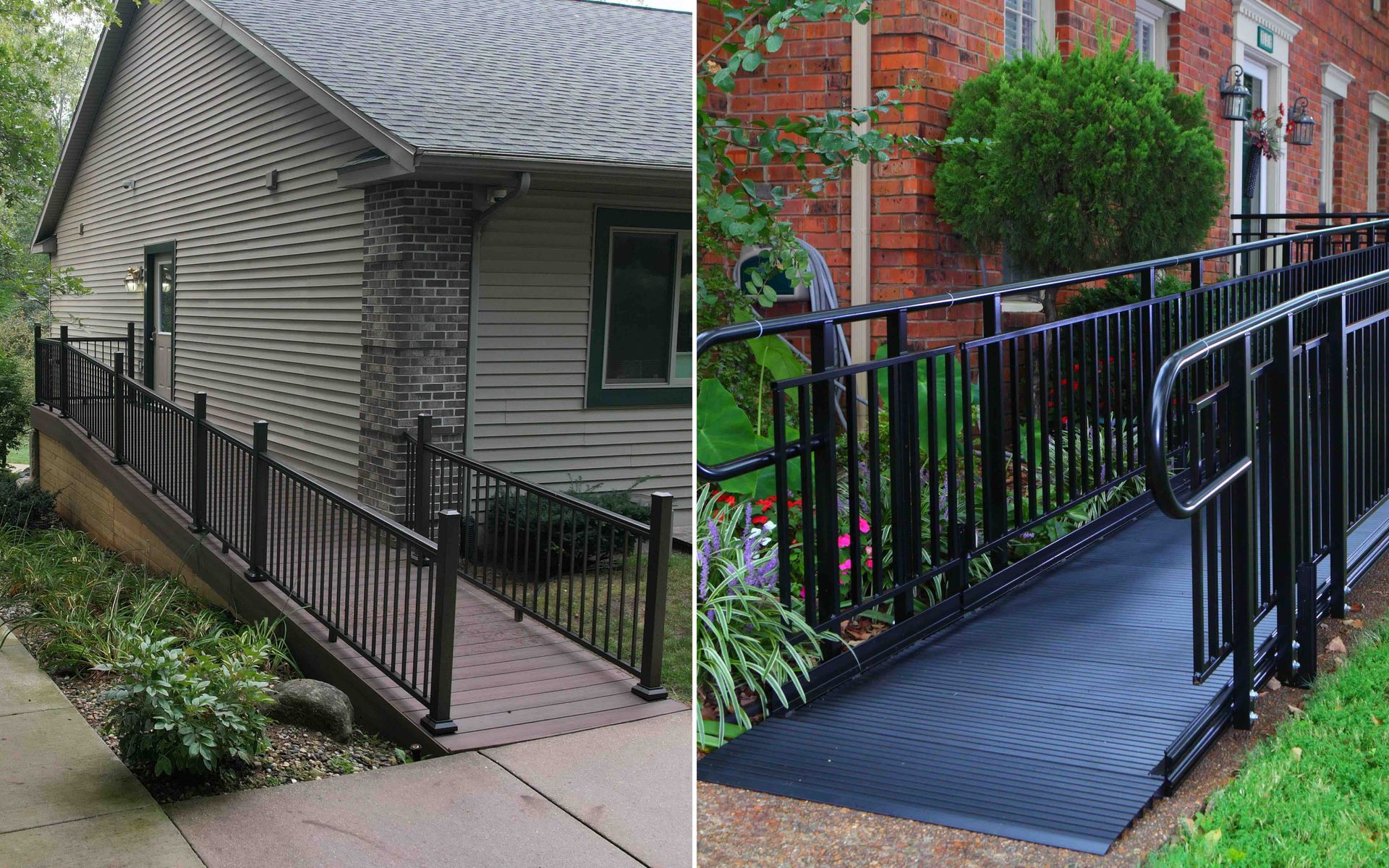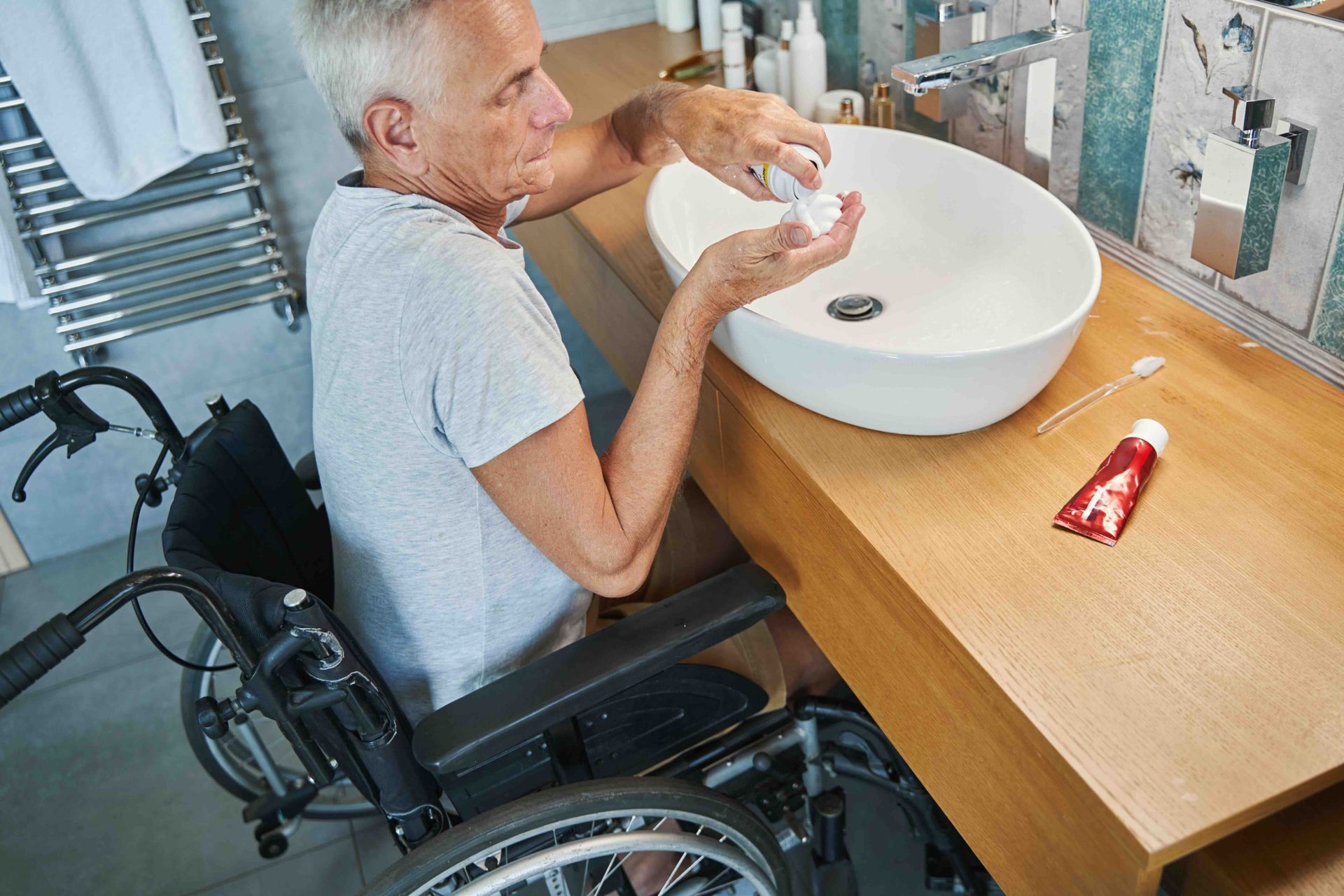Transforming a home to accommodate accessibility needs requires a skilled and experienced contractor. While many companies offer home renovation services, not all possess the expertise necessary to create a truly accessible and safe living environment. To ensure a successful project, it's crucial to identify the qualities of a top-tier accessibility contractor.
Understanding Accessibility Standards
The foundation of any successful accessibility project is a deep understanding of relevant standards and regulations. A qualified contractor will be intimately familiar with the universal design, barrier-free design, and other applicable guidelines. This knowledge is essential for creating not only compliant but also functional and comfortable spaces for individuals with disabilities.
A Client-Centric Strategy for All Things Related to Home Modification and Renovations
The best accessibility contractors prioritize their clients' needs and preferences. They take the time to listen carefully to understand specific requirements, challenges, and desired outcomes. A collaborative approach is vital, as the contractor should work closely with the homeowner to develop a customized renovation plan that exceeds expectations.
Incredible Attention to Detail
Attention to detail is paramount from the initial consultation to the final walkthrough. A reputable contractor will meticulously plan and execute every aspect of the project. This includes careful material selection, precise measurements, and impeccable craft. High-quality materials that are both durable and accessible should be used throughout the renovation. Additionally, the contractor should involve the homeowner in the material selection process to meet their preferences.
Effective Communication
Open and transparent communication is essential for a successful accessibility project. The contractor should be skilled at explaining complex concepts clearly and clearly. They should also be responsive to inquiries, provide timely updates, and address concerns promptly. Before work begins, a detailed proposal outlining the project scope, timeline, and costs should be provided. Regular communication throughout the project keeps the homeowner informed and involved. We make sure our customers are informed and feel valued throughout the whole process by using JobTread.
Professionalism and Integrity
A reputable accessibility contractor will conduct business with honesty and integrity. They will adhere to ethical practices, meet deadlines, and respect the homeowner's property. Effective communication with clients, subcontractors, and other stakeholders ensures a smooth and efficient project.
What Factors Should You Be Looking For?
When selecting an accessibility contractor, making an informed decision is crucial to ensuring your project is completed successfully and meets all necessary standards. Accessibility modifications can significantly impact the quality of life for those with disabilities, so it's crucial to choose a contractor who understands the unique challenges and requirements of these projects. Here are some key factors to consider when selecting an accessibility contractor:
- Experience
Experience is one of the most important factors when choosing an accessibility contractor. Accessibility modifications often involve complex adjustments to a home's layout and structure to make it safer and more comfortable for individuals with disabilities. Look for a contractor who has a proven track record of completing accessibility projects similar to yours. An experienced contractor will be familiar with these projects' specific challenges, such as navigating building codes, ensuring ADA (Americans with Disabilities Act) compliance, and understanding the unique needs of those with disabilities. They will also have established relationships with suppliers and subcontractors who specialize in accessibility products and services, which can be crucial for your project's timely and efficient completion. - Certifications
While not always a requirement, certifications can be a valuable indicator of a contractor's expertise in accessibility design and construction. Certifications demonstrate that the contractor has received specialized training and is committed to staying up-to-date with the latest industry standards and best practices. For instance, a contractor certified by a recognized organization like the National Association of Home Builders (NAHB) as a Certified Aging-in-Place Specialist (CAPS) would have undergone training specifically focused on home modifications for aging and disabled individuals. Additionally, certifications from the International Association of Accessibility Professionals (IAAP) or similar organizations can ensure that the contractor knows about accessibility issues and solutions. These certifications not only enhance the contractor's credibility but also offer peace of mind to the homeowner(s). - References and Feedback
One of the best ways to gauge the quality of a contractor's work is by talking to their previous clients. Requesting references allows you to gather firsthand accounts of the contractor's work ethic, quality of service, and ability to complete projects on time and within budget. Don't hesitate to ask for details about any challenges encountered during the project and how the contractor handled them. In addition to direct references, you can also research online reviews and feedback about the contractor. Websites like Yelp, Google Reviews, and the Better Business Bureau can provide insights into the experiences of other homeowners who have worked with the contractor. While a few negative reviews are not uncommon, be wary of contractors with consistently poor feedback or unresolved complaints, as this could be indicative of more significant issues. - INSURANCE
Another critical consideration is ensuring that the contractor is adequately insured. Insurance is essential for protecting the homeowner and the contractor in case of accidents, injuries, or damages during the project. At a minimum, the contractor should carry general liability and workers' compensation insurance. General liability insurance covers damages to your property that might occur during the project. In contrast, workers' compensation insurance provides coverage for any injuries that might be sustained by the contractor's employees while working on your home. Before hiring a contractor, ask to see proof of insurance and verify that it is current and covers the scope of your project. Hiring an uninsured contractor could leave you financially liable for any accidents or damages that occur, which could end up costing you significantly more than you anticipated.

Common Types of Home Modifications for Enhanced Accessibility
Home modifications make living spaces more accessible for individuals with disabilities, older people, or anyone with mobility challenges. These modifications can range from simple adjustments to more complex installations aimed at creating a safer, more comfortable environment. Here are some common types of home modifications designed to enhance accessibility:
- Wheelchair Ramps
Wheelchair ramps are among the most common and essential modifications for homes where individuals use wheelchairs or walkers. These ramps provide a smooth, inclined surface, allowing easy access to entrances and exits without needing stairs. Ramps can be permanent structures made from materials like wood or concrete or portable, offering flexibility for temporary needs. When installing a wheelchair ramp, it's crucial to ensure the slope is gentle enough to be navigated safely and comfortably. The Americans with Disabilities Act (ADA) recommends a 1:12 slope ratio, meaning that the ramp should be 12 inches long for every inch of height. - Widened Doorways
Narrow doorways can be a significant barrier for individuals who use wheelchairs or walkers. Widening doorways to at least 32 inches can make it easier for these individuals to move from room to room. This modification may involve removing door frames, relocating light switches, and adjusting wall structures. In some cases, installing pocket doors, which slide into the wall, can also be a space-saving solution that enhances accessibility - Grab Bars and Handrails
Grab bars and handrails are simple yet effective modifications that can significantly enhance safety in various areas of the home. These supports can be installed in bathrooms near toilets, showers, hallways, and staircases to provide stability and prevent falls. When choosing grab bars and handrails, it's crucial to select sturdy, non-slip materials that can support the total weight of an individual. They should also be installed at a height that is comfortable and easy to reach. - Accessible Bathrooms
Bathrooms can be particularly hazardous for individuals with mobility challenges, so making them more accessible is often a priority. Common modifications include installing a walk-in or roll-in shower with a built-in seat, adding a handheld showerhead, and replacing a standard bathtub with a walk-in tub. Lowering countertops and sinks or installing wall-mounted sinks can provide easier access for wheelchair users. Additionally, adding a raised toilet seat or a comfort-height toilet can make it easier for individuals to sit down and stand up. - Patient Lifts
Patient lifts can be an essential modification for individuals with significant mobility challenges. These lifts are mechanical devices that help caregivers safely transfer individuals from one location to another, such as from a bed to a wheelchair or a wheelchair to a bathtub. Ceiling-mounted lifts, installed along tracks, are a popular option because they save space and can be used throughout the home. Portable floor lifts are also available and can be moved from room to room as needed. - Lowered Kitchen Counters and Cabinets
Making the kitchen more accessible often involves lowering countertops and cabinets so they can be reached by individuals in wheelchairs. This modification can include installing pull-down shelves, creating roll-under workspaces where the wheelchair can fit comfortably, and relocating appliances like microwaves and ovens to a height that is easy to access. By making these adjustments, individuals with mobility challenges can maintain their independence and continue to participate in daily activities like cooking and meal preparation.
Lakeshore Barrier-Free is Your Partner in Accessible Homes
At Lakeshore Barrier-Free, we are committed to providing exceptional accessibility solutions. Our team of skilled professionals brings years of experience to every project. We pride ourselves on our customer-focused approach, open communication, and attention to detail. We work closely with our clients from concept to completion to create safe, functional, and beautiful accessible spaces.
We understand that accessibility renovations can be disruptive, and we strive to minimize inconvenience. Our goal is to deliver high-quality results that exceed expectations while providing exceptional customer service every step of the way.
By choosing Lakeshore Barrier-Free, you select a partner dedicated to creating accessible homes that enhance quality of life.
TALK TO THE EXPERTS OF LAKESHORE BARRIER FREE TODAY!
We believe that everyone should have access to every area of their home! We work directly with you to make sure that every grab bar, bathroom sink, kitchen countertop, patient lift, and more is at the perfect location for you and your loved ones. Call us at
(616) 477-2685 or email us at
Info@LakeshoreBarrierFree.com
CONTACT LBF for Barrier-free living
At Lakeshore Barrier Free, we strive to create welcoming, accessible, and functional living environments for everyone.

CONTACT LBF for Barrier-free living
At Lakeshore Barrier Free, we strive to create welcoming, accessible, and functional living environments for everyone.


VETERAN-OWNED
(616) 477-2685
Info@LakeshoreBarrierFree.com
307 Northern Dr, Suite C, Grand Rapids, MI 49534

VETERAN-OWNED
307 Northern Dr, Suite C
Grand Rapids, MI 49534
Navigation
Services
All Rights Reserved | Lakeshore Barrier Free
Website by SPECK DESIGNS
All Rights Reserved | Lakeshore Barrier Free
Website by SPECK DESIGNS




